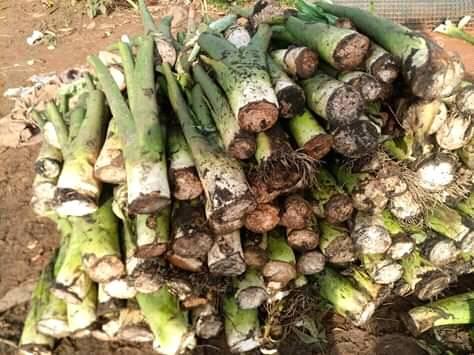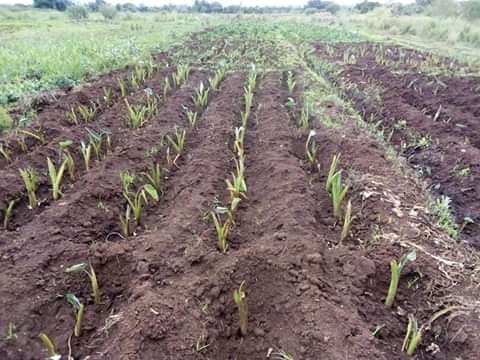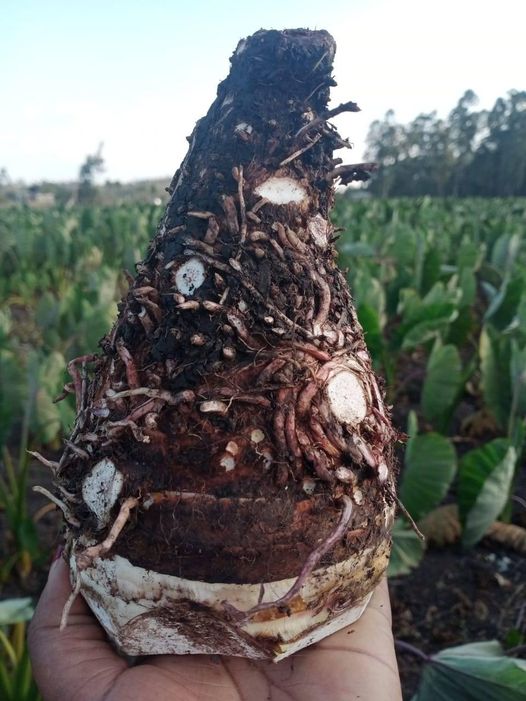By George Munene
When considering lucrative agribusiness ventures to get into, arrowroot farming will probably hardly get a mention from most people. For Elisha Mukoya, a Mumias mixed farmer who also grows more conventional crops such as maize, onions, tomatoes, and sugarcane, in arrowroots, popularly known as ndoma, he’s found his main moneymaker: “Arrowroots are cheap to grow with the cultivation of an acre requiring an initial capital of Sh90,00-60,000 with a return of Sh260,000 in six to seven months.”
Simply known by his moniker, “Arrowroots farmer”, in farming circles, Elisha started out growing arrowroots on a quarter an acre some two and a half years. He currently farms six acres of the tuber crop. He also supplies hundreds of farmers across the country with its growing stems, carving a niche for himself amongst the foremost authorities on arrowroot farming in Kenya.
Varieties
“Picking uniform and an appropriate variety of arrowroots to grow for your region will determine the success of your venture months later,” Elisha says. All cultivars planted on the same plot of land should be of the same variety– this ensures the entire crop is harvestable at the same time.

Poorly sourced stem cuttings can be disease vectors while badly prepared suckers, ie those whose tubers and leaves are not precisely cut are more susceptible to disease attacks and rotting as well as being ineffectual propagation material.
The main arrowroots grown in Kenya are Dasheen, Eddoe, and Hybrid varieties, each with their particular pros and cons.
Mukoya sorely grows dasheen arrowroots. He opted for the variety given it matures in seven months; the shortest time taken by all arrowroots. Dasheens are favored by large-scale buyers for their ideal size with each tuber weighing about half a kilogram. Being that it grows in upland regions, it requires reasonable irrigation to thrive, meaning it is rarely affected by rot which is the main hazard for most arrowroot farmers. Dasheen also grows up to six times more suckers than the Eddo and Hybrid varieties making its propagation easier for farmers. It is characterised by dark green leaves and stems that grow up to 75cm tall. It is whitish when cut at its roots with fading spots and is powdery when cooked.
Eddoe arrowroots grow in wet regions, weigh on average one kilogram and take nine to eleven months to reach maturity. They have yellowish/orange stems that grow up to one meter tall and their tubers are blue/white or a mix of both with clear spots. Given their growing conditions they are more easily susceptible to rotting.
Hybrid arrowroots are jumbo-sized weighing up to two kilos per tuber. To achieve this, however, their period to maturity is 15-16 months. They have distinctly tall stems that grow up to two meters.
Getting started
Arrowroots should be spaced one foot between each set of two stems and two and a half feet between each line. Close spacing hinders the fattening of tubers leading to premature growth–tubers will need to be harvested in four to five months– before they are fully developed.

Planting and harvesting seasons should be synchronised to rain patterns. Plantlets are sown at the onset of rains, i.e., March/April to be harvested during the drier August to September months.
Elisha utilises Mumias’ favorable climate to have two growing seasons. Using stems, rather than suckers, which mature faster (five to six months) as the planting material over the November and December short rains
Borrowing from experience he recommends farmers use cow or goat dung for manuring’ this he applies a handful of per hole during planting. “Chicken or pig manure I have found to be more appropriate for growing vegetables, but when applied to arrowroots there is poor bulking of tubers and returns are poor,” he points out.
Arrowroots need sufficient watering and fertile soils. About 30 percent of potential yields are lost if the irrigation levels are insufficient. However, contrary to popular belief, Elisha says farmers should not grow arrowroots on stagnant water as this often rots tubers.
Starter farmers will need to source for planting stems, an acre requires about 12,000 stems which will set one back about Sh60,000. Mukoya delivers stems to farmers across the country at five shillings a stem.
Markets
Marketability is determined by the quality of your arrowroots; this is dictated by proper feeding and management. For largescale farmers, dasheen arrowroots are preferable for being medium-sized which is the tuber size most buyers demand.
Formerly Elisha dealt with consumers directly but has had to rely on brokers as his quantities of arrowroots have increased. He is currently selling a 110-kilogram sack of arrowroots for Sh7500.
The challenge for most small-scale farmers is it is uneconomical to source for markets given they can only deliver small quantities at a time.
Management
Proper feeding is ultimately what will determine the quality of your arrowroots. Topdressing should be done between the second and third months after planting. This is done by applying NPK inorganic fertiliser. A 50-kilogram bag adequately caters to one acre.
To have your arrowroots flourishing and eventually have sizable tubers you will need to stick to a strict schedule. Weeding will need to be done at least four times before harvest. As arrowroots grow below ground Elisha warns farmers not to wait until weeds are visible or the planted stem sprouts above ground to weed them out. While weeding, earthing up should be practiced, burying the growing stem helps spur their growth. Consistent weeding also helps loosen the soil, freeing the tuber and allowing it to enlarge. Compacted soils hinder expansion meaning the plant will focus on maturing, this leads to poorly filled arrowroot tubers. It is as well important to check on the hygiene of your farm.

“It is important that arrowroots are given time to fully mature; early harvesting gives soggy or hard tubers that are impossible to cook,” Mukoya advises. The final two months are especially important in this regard allowing the tubers to harden. The arrowroots should not be watered during this time as this could cause rotting, rather they should be left to bake in the biting sun and stiffen up.
Elisha Mukoya:0708900187